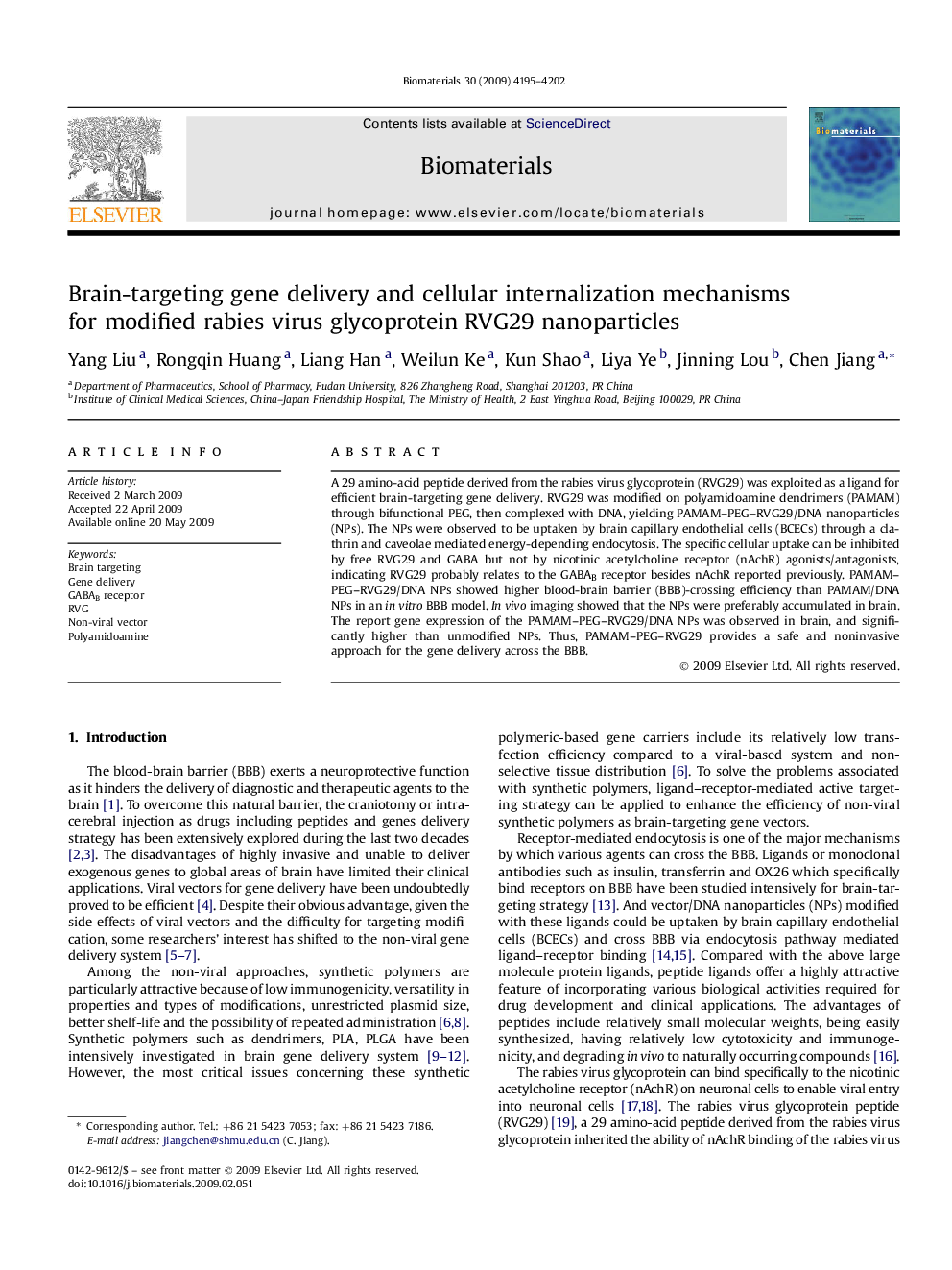| Article ID | Journal | Published Year | Pages | File Type |
|---|---|---|---|---|
| 9944 | Biomaterials | 2009 | 8 Pages |
A 29 amino-acid peptide derived from the rabies virus glycoprotein (RVG29) was exploited as a ligand for efficient brain-targeting gene delivery. RVG29 was modified on polyamidoamine dendrimers (PAMAM) through bifunctional PEG, then complexed with DNA, yielding PAMAM–PEG–RVG29/DNA nanoparticles (NPs). The NPs were observed to be uptaken by brain capillary endothelial cells (BCECs) through a clathrin and caveolae mediated energy-depending endocytosis. The specific cellular uptake can be inhibited by free RVG29 and GABA but not by nicotinic acetylcholine receptor (nAchR) agonists/antagonists, indicating RVG29 probably relates to the GABAB receptor besides nAchR reported previously. PAMAM–PEG–RVG29/DNA NPs showed higher blood-brain barrier (BBB)-crossing efficiency than PAMAM/DNA NPs in an in vitro BBB model. In vivo imaging showed that the NPs were preferably accumulated in brain. The report gene expression of the PAMAM–PEG–RVG29/DNA NPs was observed in brain, and significantly higher than unmodified NPs. Thus, PAMAM–PEG–RVG29 provides a safe and noninvasive approach for the gene delivery across the BBB.
